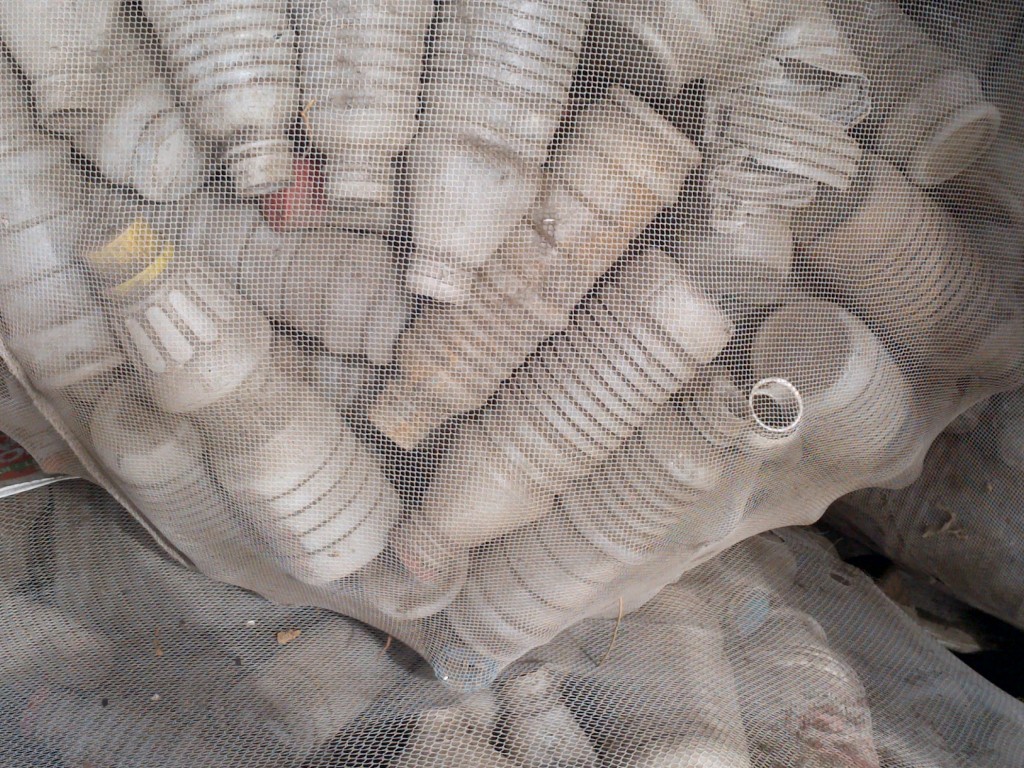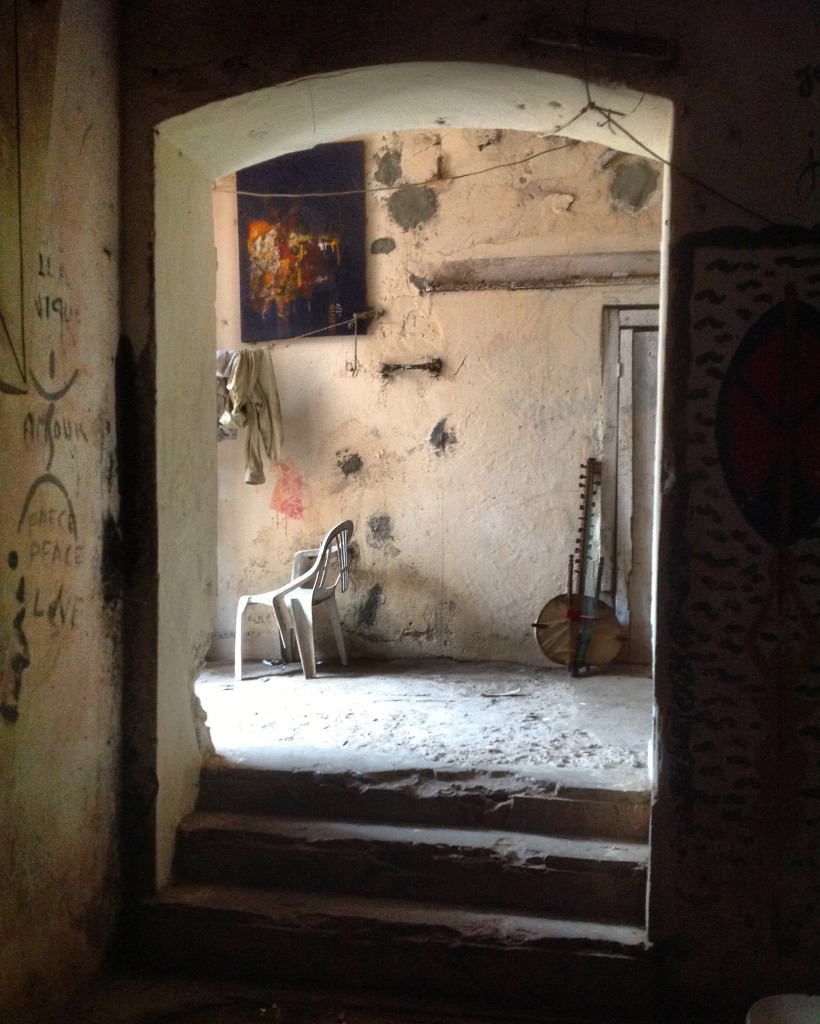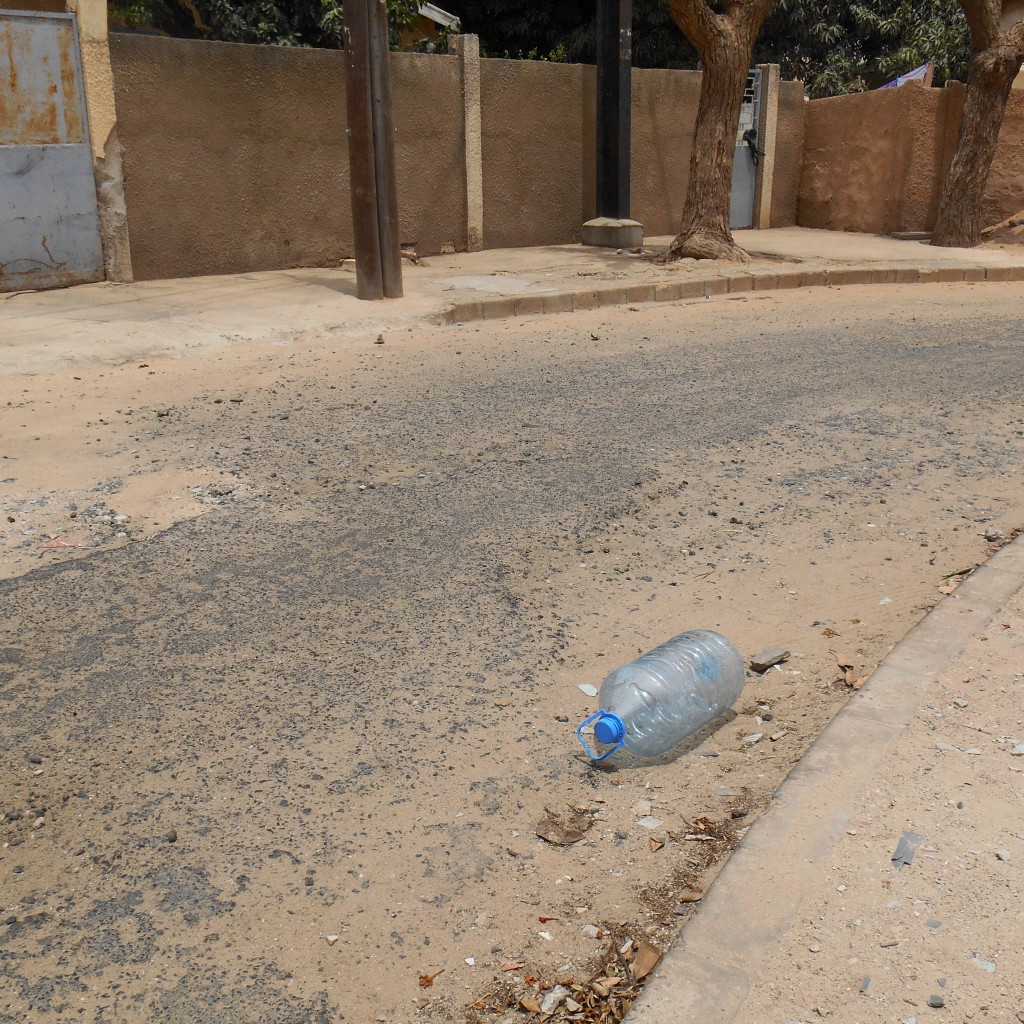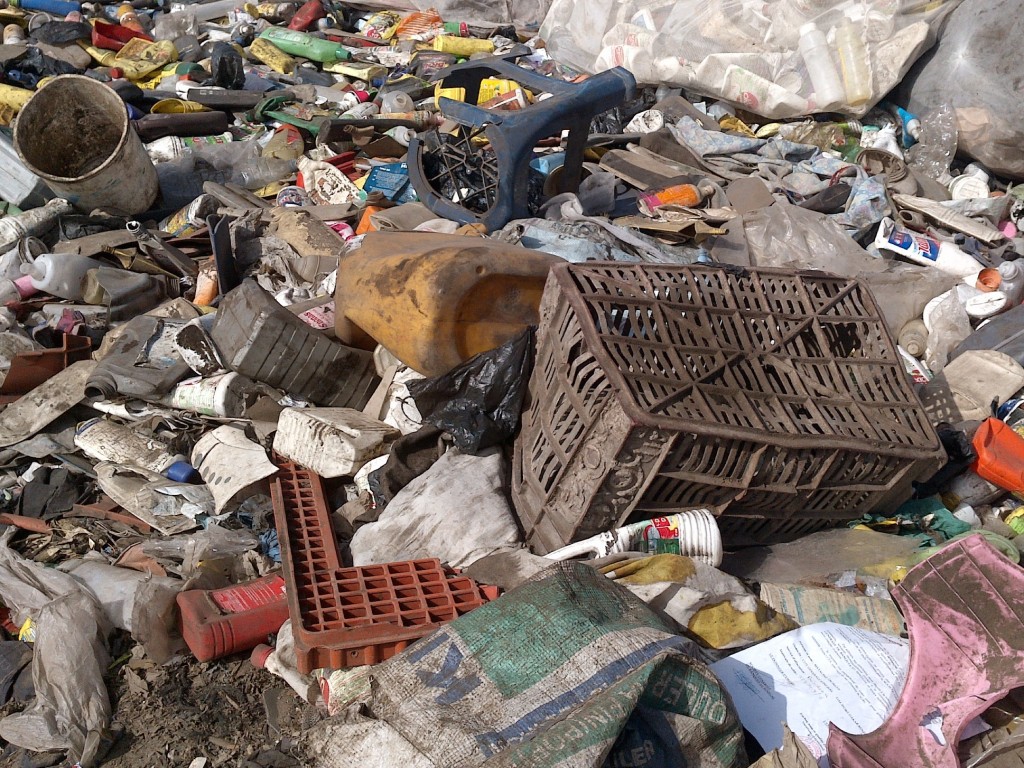by Thérèse d’Auria Ryley
The burden of single-use plastic bags on urban infrastructure has been a focus of the environmentalist movements and urbanist thought in the 21st century. Single-use plastic bags, however, are not the only plastic that becomes entangled in the cityscape. In fact, plastic in all its forms is so integrated into cities that it is not possible to imagine urban infrastructure without it.
Plastic in all its forms is so integrated into cities that it is not possible to imagine urban infrastructure without it.
In the urban context, plastic is ubiquitous. Like the concrete, steel, and tar that compose the urban landscape, plastic is integral to the form and function of urban space of the 21st century. Plastic piping carries water from dams to cities; plastics encase fiber optic cables and electrical wires. Plastics are necessary to power electronics, maintain the shelf life of foodstuffs, and move goods quickly across oceans in vast quantities from one node to another. And while each of these differs in chemical composition, once discarded, they all are obstacles to urban waste management systems.
Urban dwellers differ by origins of class, place, occupation, race, and so on. And so they also differ in ways by which they engage plastic objects.
What follows is an exploration of the intertwined social and material landscapes of Dakar – the bustling capital of Senegal. Senegal banned plastic bags one year ago, in April 2015, as a means to curb environmental and infrastructural damage particularly severe in the nation’s capital. The vignettes capture social interactions in which plastic objects transcend material stagnancy and figure dynamically in the social lives of Dakar’s inhabitants. Urban dwellers differ by origins of class, place, occupation, race, and so on. And so they also differ in ways by which they engage plastic objects
These vignettes highlight the ambiguity of this material, and the challenges that such ambiguity poses to reimagining urban infrastructure in a way that meets the social and material needs of diverse inhabitants. Ultimately the social world of the city complicates the 21st century politics of plastic.
Madické calls himself a true ecologist. He does so several times during our conversation. He lives in a French military bunker, long abandoned, at the top of a steep hill. His artwork hangs everywhere, along with other things that I assume serve as artistic inspiration. Madické’s work features recycled materials—trash, really. He repurposes cellphone cases, old water bottles, anything commonly found in the city’s litter. He sells his works at Gorée Island, one of Dakar’s major tourist attractions.
Tourists come to see the Museum of the Slave House, and then meander the island to buy souvenirs, like Madické’s art. From Madické’s home one can observe European visitors, unconditioned to the Sub-Saharan sun, huffing and puffing up to the hilltop with red faces. Madické is passionate about his work, that much is clear. He tells me so as he balances himself on his plastic chair, whose spines are broken. His balancing act gives him an air of stoicism as he speaks, slightly leaning forward, quietly bracing against the precariousness of the chair.
Madické calls himself a true ecologist. He does so several times during our conversation. He lives in a French military bunker, long abandoned, at the top of a steep hill.
He talks about what he incorporates into his work, how he finds these items, and the ecological message he tries to convey. He uses cigarette butts for mud huts, discarded cellphone cases for human torsos, spoons for legs. He is moved by the tragedies he sees in Dakar. Seeing young boys begging in traffic sickens him, he tells me they often get hit by cars. Society treats them like trash, he says. We converse for a little over an hour, with mostly Madické speaking intensely about the social problems he sees, and how he wields his perspectives into art. He needs a break. He pulls out a little bag of weed and another little bag of tobacco and rolls a spliff.
He moves the dilapidated plastic chair to the entryway for me to sit.
I went to see Moustapha. We met at the tea shack, and he expressed an interest in speaking with me. I sat down with him, and began our conversation with the following question: why do you make this art from recycled materials?
He shrugs, what an easy question. “Because white tourists like to buy it.”
Moustapha took me to see his other works, all the while carrying on about all the European tourists who want to buy art made out of trash. It really cuts down on overhead costs, he says, to use discarded items found in the street rather than purchasing materials from an art supply store.
The first time I bought one of Modou’s wares, I tried to begin the conversation in Wolof, but he quickly changed to French. He doesn’t speak Wolof. Modou is from Guinea. He must be in his 60s. I walk by the corner where he sells his fans and woven baskets almost every day to get to my office, to go to the grocery store, to the bank. His stand is placed in a perfect thoroughfare, with lots of foot traffic, but right at a corner where pedestrians naturally have to slow down and observe surroundings to safely navigate the intersection. I imagine his small business does well. He always says hi, and I always say hi. It is a nice feeling to see this familiar face in the neighborhood on my way to work and on my way home.
We are both foreigners in Dakar, but in different ways. Modou explained that he had been a basket weaver all his life, and that he had lived in the capital cities of countries in the region like Guinea and Sierra Leone before making his way to Senegal. I asked where he got the long spools of colorful plastic thread with which he crafted baskets, fans, and tote bags. As he speaks, he reaches to touch fans hanging from thread in the acacia tree, directing my gaze at different items. Modou has only ever used plastic twine to make baskets in Senegal; in the other countries he used natural fibers, like raffia.
I walk down one particular road often. It is just adjacent to the main road, but it’s so quiet. It is narrow, and it has not been repaved in a long time. In fact, it looks like someone started repaving it and had removed the top layer of tar to do so. Two buildings on the street are currently under construction, and piles of mixing sand pour into the weathered city street. There are rarely people out on the street. Sometimes the neighbor kids play soccer, and the soccer ball ricochés off the divets in the road and bounces back and forth between the tight walls. It looks like much more fun than playing on a flat pitch; exciting in its unpredictability.
This morning, I walk down the street on my way to work. Near the bend, there is a large plastic water container in the road. There is a calm breeze, and the container skids back and forth on the unpaved road. It is scuffed from this friction, but it still catches the sunlight in a few places as it rolls. On this quiet street, the only sound is of the container’s movements against the concrete.
Bump bump bump. Bump. Bump bump. Then a thud, when it hits against the curb.
Nabu passed us by on the street. She was carrying a large bucket on her head and we couldn’t see all of what was inside–just a few plastic bottles peeking out of the top. But it seemed heavy by the effort that showed in her face and her gait.
“Women’s work is very hard.”
Pierre said this in a pensive but stoic way as she passed.
Nearby, in Nabu’s small home, I sit with her, her cowife, and her husband, who is sprawled across the bed. We are in their bedroom, and a t.v. in the corner is playing Senegalese sit-coms. I began to go through the consent process prior to beginning our interview and she just begins to tell me about her work. She, with great enthusiasm, told me everything I wanted to know. I didn’t ask a single question. She makes juice for the mechanics that work on taxis. Her stand is right next to the gas station. She puts the juice in these used plastic bottles, which she buys at the market.
“Yes, there are these people who collect used plastic bottles and then they resell them at the market. Only 25CFA per bottle! It’s a great deal!”
Nabu passed us by on the street. She was carrying a large bucket on her head and we couldn’t see all of what was inside–just a few plastic bottles peeking out of the top. But it seemed heavy by the effort that showed in her face and her gait.
Less than 5 cents USD a bottle. Nabu runs out of the room, and comes back with a large clear plastic trash bag filled with empty plastic bottles. The bottles were all used – old plastic coca cola bottles, fanta bottles, and so on – but in good condition, and well cleaned.
“Look, I buy them all at the market!”
Nabu’s colleagues – the market vendors – collect the discarded bottles mostly from restaurants and corner stores, and resell them to Nabu and other juice makers, who then resell them filled with juice.
Ali met Moussa and me at the entrance to the waste dump. He is very energetic and I am not because I’ve been sick. Moussa is calm as always, and Ali’s intensity stains our quiet. After a bit of awkward formalities at the Waste Pickers Association’s center, Moussa puts the car in gear and we move slowly into the heart of the waste dump, Moussa careful to protect his tires from the compacted debris below.
I wasn’t prepared for the familiarity of the waste dump. Looking down at my feet, seeing limbs of the plastic chairs in which I frequently sit, the empty crunched water bottle—was that my water bottle? All the things that nobody wanted anymore, and wanted out of their personal space, found its way here. All of this below our feet, as we stood atop a large hill made entirely of trash, the integrity of its structure maintained by non-biodegradable discarded plastics. I began to mentally catalogue my contributions to this trash mountain since arriving in Dakar earlier that summer, since May. How many plastic bottles? A shampoo bottle maybe. I sometimes indulge in a Coca-Cola, but they are always in glass bottles, whichI return to the butik once I’ve finished. So, no Coca-Cola bottles. But perhaps a plastic bag or two, or three? Definitely an empty ibuprofen bottle.
I wasn’t prepared for the familiarity of the waste dump. Looking down at my feet, seeing limbs of the plastic chairs in which I frequently sit, the empty crunched water bottle—was that my water bottle?
Ali’s job, and the job of his fellow workers, is to search through the trash, pull out plastic objects, sort it, and then sell it to plastic companies to melt down and make plastic pellets or plastic reams. New things will be made from these old worn plastic things. But most of these old worn plastic things will just remain in the waste dump.
A man walks by with a horse cart overflowing with mesh bags full of single-use plastic bags, the kind you get at the grocery store. I watch as he trudged through the waste, leading his tired horse, on his way to sell all the dense bundles of plastic bags.
There are a lot of tubaabs in Dakar. The presence of tubaabs – white westerners – is just one feature of Dakar’s international fabric. Dakar is a cosmopolitan city and its urban dwellers hail from across the globe. These foreign diplomats, dignitaries, NGO workers, interns, and volunteers are sprawled throughout the city. They tend to congregate in certain spaces more than others. Mark’s potluck brunches are one of these spaces. At these events tubaabs tend to talk about ‘back-home’ as though Europe and North America are planets in a distant galaxy and not one nonstop flight away.
Mark is younger than most of his guests, a charismatic undergrad from a prestigious university whose social finesse makes him seem much older and more refined than his counterparts. As we prepare the meal, Mark asks if anyone would like some water.
There are different degrees of bottled water reliance that must be addressed during the ritual: Do you wash your teeth with bottled water or with the tap water? Do you dare to even let the tap water rinse your mouth for fear that some small yet mighty battalion of bacteria might advance to the deepest recess of your intestines? What happened when you visited that rural village?
And so the grand drinking-water debate is initiated. A ritual really, amongst tubaabs in Dakar, between tubaabs in Dakar and their loved ones on Skype. The debate centers on whether or not one is either brave enough, or stupid enough – depending on who is holding court – to drink the local water, rather than buy endless supplies of bottled water. Once a tubaab divulges his or her personal practices pertaining to one’s bottled water use while in this Sub-Saharan African city are discussed, you will know which tubaab sub-group you belong to.
There are different degrees of bottled water reliance that must be addressed during the ritual: Do you wash your teeth with bottled water or with the tap water? Do you dare to even let the tap water rinse your mouth for fear that some small yet mighty battalion of bacteria might advance to the deepest recess of your intestines? What happened when you visited that rural village? A woman offered you some water from the ndaa upon seeing how uncomfortably hot you were, red-faced and sweating profusely under the Saharan sun. You found an acceptable way to reject her offer, or you boldly accepted, sacrificing your health and maybe even your life to maintain social graces.
Mark drinks the tap water exclusively. He is willing to face typhoid head-on, daring microbes to defy his immune system.
As we chop potatoes together at the dining room table, a young woman quietly comments to me that she only drinks bottled water. With furrowed brow, she pauses to share with me her frustration over the hassle of making so many trips to the corner store to buy bottled water. She doesn’t know what to do with all these bottles.
In April 2016, one year after the announcement of the ban on single use plastic bags, the absence of plastic bags at checkout lines and corner stores is more and more tangible as store clerks hand out the last of the plastic bags. Social interactions begin to mold not around the presence of plastic items, but their absence.
“I don’t carry plastic bags anymore”, the clerk of the corner store told his customer. This small neighborhood corner store is filled from floor to ceiling with all kinds of food items, beauty products, and sundries. There is just barely enough space for the clerk and his customer to occupy either side of the counter, and I stand on the threshold waiting for this transaction to be settled so that I can buy credit for my phone. The rusted doorway, contrasted with the colorful packaging of the stocked items, has an aesthetic quality, serving both to beautify and define Dakar’s residential neighborhoods. By the casualness of their body language, it’s obvious the clerk and his customer know one another. His customer must have come to his shop several times a week for who knows how long – sometimes a morning coffee, an evening cigarette, a bottle of soda on a hot weekend afternoon.
In April 2016, one year after the announcement of the ban on single use plastic bags, the absence of plastic bags at checkout lines and corner stores is more and more tangible as store clerks hand out the last of the plastic bags. Social interactions begin to mold not around the presence of plastic items, but their absence.
The customer was not pleased. He bought a small bottle of juice, a bag of potato chips, and a card of phone credit. The items were displayed on top of the glass counter, and the clerk gestured to each one, silently mouthed their individual prices, paused to mentally tally, and then finally announce the total out loud.
“We don’t carry them anymore; they stopped making them.” He explained as he took his customer’s crumpled bill and searched for change in the cashbox.
His customer became more vexed. The customer had not been aware that the government banned single-use plastic bags almost a year ago. He held the clerk accountable, and pressured him to explain how one is to conceal purchases. The thought of walking through the neighborhood with his – the customer’s – purchases exposed is an indecency that disturbed him. In so doing, he would be inviting the curiosity of his neighbors, who would see this open display of consumption as an equally open invitation for them to engage in additional social faux pas in the microcosm of the neighborhood. What a gross negligence on the part of his trusted neighborhood clerk to not provide him with an opaque black plastic bag, a requisite for appropriate public behavior and consumption, however insignificant they may seem at times.
He gathered his purchases, and with a disgruntled sigh shoved the snack in his pants pocket, taking extra care to pull his shirt over his pockets to conceal his purchases from onlookers.
Plastic has always been meant to be molded, bent, melted, into many forms. At times plastic catalyzes new social arrangements, at other times it disrupts these arrangements, and still at others its presence is barely significant. Plastic often factors into social engagements as a central topic of inquiry – whether that involves debating whether or not to consume bottled water instead of drinking the potentially contaminated tap water, or making political statements through art about the intersections of plastic pollution and social ills.
Yet the very objects that cause us to take pause and question the damaging ways in which they affect urban lives are also the very same objects that in other ways uphold that life—offering a chair for a friend to sit in, a cup to drink from—without reference to or acknowledgement of the fact that these items are as much a part of the industrial economics of plastic materials in urban circulation as that notorious plastic water bottle and single-use plastic bags.
While our environmentalist conversations focus on plastic bags, we often ignore the fact that plastic is present everywhere and in many different forms. Because of its ubiquity, it more often than not occupies an ambiguous and contradictory role in social life. It plays an important role in social lives and urban spaces, but also results in challenging impacts on city infrastructure. Its benevolence is counterbalanced by its own malevolence. As urban spaces like Dakar phase out plastics and turn towards alternative materials and systems to mitigate problems, questions of the benevolence of those materials will continue to arise.
All photos by Thérèse d’Auria Ryley.
Special thanks to Dr. Richard Kernaghan. His ethnographic writing workshop was the catalyst for this piece.
Thérèse d’Auria Ryley is a design anthropologist whose work explores the nexus of environment, urban infrastructure, and public life. Her work explores the impact of modern living on urban space in Philadelphia, USA and Dakar, Senegal. She is a proud Philly native. She tweets at “@thérèsedauria.”
To receive our next article by email, click here.



